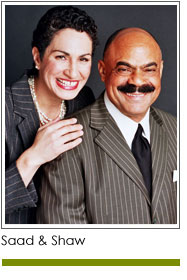 One way to help sustain your organization is to build and nurture relationships with decision makers who can provide finances and resources. Be intentional as you expand the number of decision makers who know your organization. It takes time for an executive within a corporation – or a board within a foundation – to decide to make a major gift or grant. While many executives have the authority to make discretionary grants, in most cases these are substantially smaller than grants made through the formal grant making process.
One way to help sustain your organization is to build and nurture relationships with decision makers who can provide finances and resources. Be intentional as you expand the number of decision makers who know your organization. It takes time for an executive within a corporation – or a board within a foundation – to decide to make a major gift or grant. While many executives have the authority to make discretionary grants, in most cases these are substantially smaller than grants made through the formal grant making process.
Here are some things to consider.
1. If you know an executive who can make a discretionary gift, be sure to speak with him or her about giving to your organization. But be prepared when you do so. Research their business priorities, locations and target markets. Learn about their philanthropic priorities. Find out if they have a foundation, and how it operates. When you do meet, ask for insights into the different ways in which gifts and grants are made. Funding may be available through business divisions or departments, through a corporate foundation or division of social responsibility.
2. Foundations invest research and thoughtful discussion before defining their giving priorities. They know the impact they want to make. As with corporations, take the time to understand their focus and desired impact. If you know a program officer or executive, talk with him or her to learn what drives the foundation’s decision making. Ask if they would consider an application, and what they would want your organization to focus on when applying.
3. In all cases where you know someone who can make a meaningful gift or grant, talk with her or him before sending a letter. Most unsolicited requests for funds never make it to a decision maker’s desk. Make a call, have a conversation, and then ask if it would be appropriate to submit a written request.
4. When meeting with decision makers, seek out areas of shared values or priorities. Explore how giving to your organization could help a donor or funder meet some of their business or philanthropic priorities. If your organization focuses on workforce development, a business may want to build a relationship that helps ensure the company has a pool of qualified employees to hire. If your organization is committed to community health and preventive healthcare, a hospital or medical insurance company may want to support your work because you have a shared vision: healthy residents who access preventive healthcare instead of the emergency room. You won’t know where the common ground lies until you begin the conversation.
While these activities may not result in an immediate gift, they contribute to a pipeline of potential donors and funders that can be cultivated over time. That is what major fundraising is all about: mutually beneficial partnerships and relationships. Take the time to introduce your organization to new leaders and decision makers. You will be investing in your organization’s future and the future of those you serve.
Copyright 2017 – Mel and Pearl Shaw
Mel and Pearl Shaw are authors of four books on fundraising available on Amazon.com. For help growing your fundraising visit www.saadandshaw.com or call (901) 522-8727.











